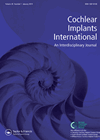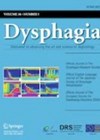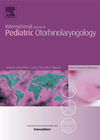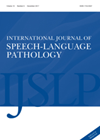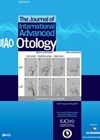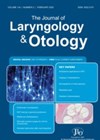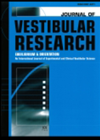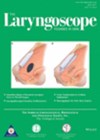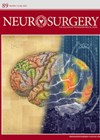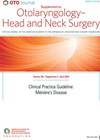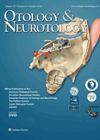
Journal Reviews archive for 2021
The impact of bilateral implantation on language outcomes
An American study retrospectively looked at the language outcomes of 204 children implanted either bilaterally, sequentially or unilaterally. All children received their first implant before the age of three years, and language measures were collected when the children were aged...
Benign oesophageal strictures: overview and management strategies
Benign oesophageal strictures may have several attributable causes including caustic injuries, long-term acid reflux, eosinophilic oesophagitis, anastomotic strictures and endoscopic therapy. Endoscopic dilation via bougies or balloon dilators may treat most strictures successfully and satisfactorily. However, in some situations treatment...
Contralateral OAEs in children
Several studies indicate that small changes in the medial olivocochlear (MOC) reflex may possibly be associated with certain pathologies. This could be measured by using contralateral acoustic stimulation (CAS) and observing suppression in otoacoustic emissions (OEAs). The main aim of...
Which scan for children with bilateral sensorineural hearing loss? Keeping the debate going…
There have been years of debate about the appropriate imaging strategy for children with bilateral sensorineural hearing loss. For those children undergoing cochlear implant surgery, CT may provide some assistance to surgical planning, although this is not necessary in children...
Better or barrier: what do healthcare professionals think about teletherapy?
Most healthcare professionals will have had to dabble in using some kind of telehealth platform over the last 18 months or so. And most of us will have had some reservations, or have colleagues who just weren’t sure about Zoom,...
Hyperbaric oxygen therapy a treatment for sudden sensorineural hearing loss
Cochlear ischaemia has been postulated as one of the potential aetiologies for sudden sensorineural hearing loss. Hence, increasing oxygen delivery to the cochlea by hyperbaric oxygen therapy has been explored as a potential treatment to reverse hearing loss. The authors...
Is endoscopic approach more precise in addressing failed ventilation system in chronic mucosal ear disease?
Chronic mucosal disease, as opposed to cholesteatoma, is more directly related to failure of the ventilation system involving three channels. Isthmus anticus and isthmus posticus are channels in front and behind the long process of the incus and there is...
Diagnostic criteria for superior semicircular canal dehiscence syndrome
The latest Bárány Society’s consensus document on diagnostic criteria for vestibular disorders is one for superior semicircular canal dehiscence syndrome (SCDS). There are three major categories: (A) Symptoms consistent with a third mobile labyrinthine window; (B) Physiologic tests – clinical...
The incidence of coagulopathies in children presenting with post-tonsillectomy haemorrhage
Tonsillectomy is often the first haemostatic challenge for a child. Postoperative haemorrhage may therefore represent the first presentation of a child’s underlying bleeding disorder. This study aimed to quantify the rate of occult coagulopathy in patients who had experienced a...
Hydrogen peroxide and its uses in healthcare
This is an interesting review about the origin and uses of hydrogen peroxide, especially in neurosurgery. However, its uses are ubiquitous and applicable to several medical specialties. When hydrogen peroxide was first discovered in 1818 by Louis Thenard, it had...
Treatment of internal carotid artery blowout with embolisation and bypass grafting (nasopharyngeal carcinoma)
Carotid artery blowout syndrome (CBS) occurs when there is rupture of the carotid artery causing massive epistaxis and bleeding through the oral cavity caused by tumour invasion, surgery, radiotherapy, or infection. This article proposes a revascularisation strategy for internal carotid...
Outcomes at three years post-implantation of the Bonebridge device
This is a MED-EL-funded study of the hearing outcomes and complication rates of the Bonebridge active transcutaneous bone conduction implant (BCI). The authors have declared no conflict of interest. Follow-up occurred at intervals for 36 months post-implantation in all 57...

